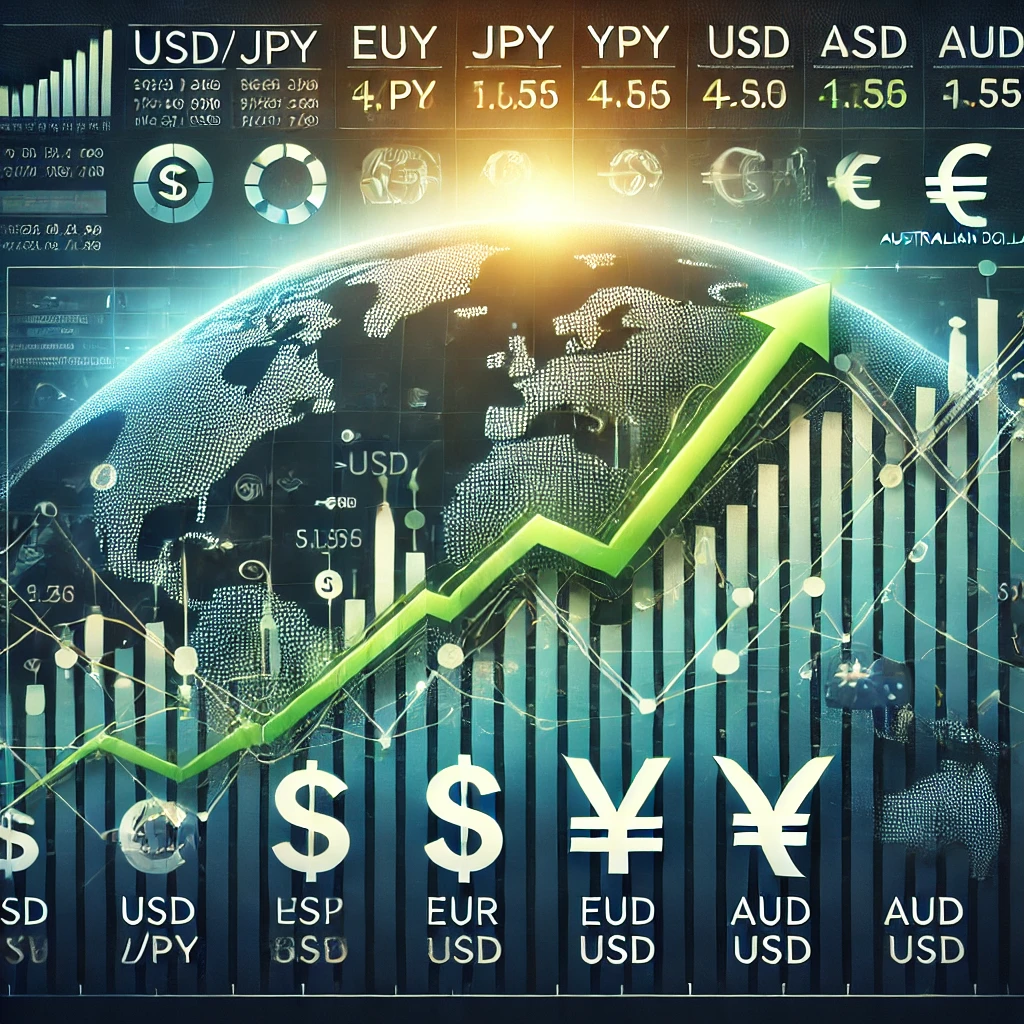USD Pumps Higher In Asia-Pacific Trading: A Detailed Forex Market Analysis

Introduction
In the fast-moving world of foreign exchange (forex) trading, market trends in the Asia-Pacific region often set the tone for global financial activity. On November 14, 2024, the U.S. dollar demonstrated robust performance during the Asia-Pacific trading session, showcasing its resilience and dominance amidst fluctuating economic indicators and global geopolitical events. This article dives deep into the factors driving the dollar’s upward momentum, its implications on major currency pairs, and how traders might strategize for upcoming sessions.
The U.S. Dollar: A Brief Overview
The U.S. dollar (USD) has long been regarded as the world’s premier reserve currency. Backed by the United States’ strong economic fundamentals and its central role in global trade, the dollar often benefits during times of economic uncertainty. In recent weeks, heightened geopolitical risks and expectations of a prolonged restrictive stance by the Federal Reserve have provided strong tailwinds for the greenback.
Asia-Pacific Trading Session Highlights
The Asia-Pacific session on November 14 saw the dollar extending gains across major currency pairs, driven by a combination of favorable domestic data, risk-averse sentiment, and shifting market dynamics. Notable highlights included:
USD/JPY Reaches New Heights
The USD/JPY pair climbed to its highest level in weeks, crossing the 160.00 threshold, as the Japanese yen continued to struggle amidst weaker economic growth and dovish tones from the Bank of Japan (BoJ). The BoJ’s commitment to ultra-loose monetary policy contrasts sharply with the Federal Reserve’s hawkish stance, amplifying the dollar’s strength against the yen.
AUD/USD Falls Amid China Concerns
The Australian dollar (AUD) faced downward pressure against the USD, as concerns over slowing Chinese demand weighed heavily. Given Australia’s strong trade ties with China, any sign of a slowdown in the world’s second-largest economy tends to negatively impact the AUD.
EUR/USD Under Pressure
The euro (EUR) remained under pressure, with the EUR/USD pair trading below the 1.05 mark. Expectations of dovish signals from the European Central Bank (ECB) further compounded the euro’s weakness relative to the dollar.
Factors Driving The Dollar’s Strength
Federal Reserve’s Monetary Policy: The Federal Reserve’s recent statements emphasize a continued focus on inflation control, with policymakers signaling that interest rates may remain elevated longer than initially anticipated. Higher interest rates often lead to increased demand for the U.S. dollar as global investors seek higher-yielding assets.
Geopolitical Risks: Geopolitical tensions, particularly in Eastern Europe and the Middle East, have driven a flight to safety, benefiting the dollar. As a safe-haven currency, the dollar typically sees inflows during periods of global uncertainty.
Divergence in Central Bank Policies: The stark contrast between the Federal Reserve’s hawkish approach and the dovish stances of other major central banks, such as the Bank of Japan and the European Central Bank, has widened yield differentials in favor of the dollar.
Economic Data and Sentiment: Strong U.S. economic data, including retail sales and employment figures, have reinforced the dollar’s dominance. In contrast, mixed data from the eurozone and Japan have weighed on their respective currencies.
Impact On Major Currencies
Japanese Yen (JPY): The yen’s continued weakness poses challenges for Japan’s import-reliant economy. The BoJ may face increasing pressure to intervene in forex markets if the yen’s depreciation persists, though such moves would likely only provide temporary relief.
Australian Dollar (AUD): The AUD’s decline highlights the challenges faced by commodity-linked currencies in a strong-dollar environment. Traders will keep a close eye on developments in China and Australian export data for further cues.
Euro (EUR): The euro’s struggle against the dollar underscores the importance of ECB policy in shaping forex dynamics. A shift towards a more neutral or hawkish tone from the ECB could provide some respite for the euro.
What’s Next For The Forex Market?
As the U.S. dollar continues to show resilience, forex traders must navigate a complex landscape of economic data, central bank policies, and geopolitical risks. Key events to watch in the coming weeks include:
U.S. Federal Reserve Statements: Any indication of a pivot or pause in rate hikes could alter the dollar’s trajectory.
Economic Data Releases: U.S. inflation, employment, and GDP data will be critical in shaping market sentiment.
Central Bank Decisions: Upcoming meetings of the ECB and BoJ will provide insight into their policy directions.
Trading Strategies Amid Dollar Strength
Leverage Safe-Haven Trades: In periods of uncertainty, safe-haven trades involving the dollar and yen often provide opportunities for short-term gains.
Monitor Yield Differentials: Currencies with higher yields relative to the dollar may face downward pressure, making short positions attractive.
Stay Updated on Economic Data: Economic indicators remain a key driver of forex trends. Staying informed can help traders anticipate market movements.
Conclusion
The U.S. dollar’s strong performance during the Asia-Pacific trading session highlights its enduring role as a cornerstone of the global financial system. As central banks and policymakers navigate an increasingly uncertain economic landscape, the dollar’s trajectory will remain a focal point for traders and investors alike. By understanding the factors driving forex movements and employing strategic trading approaches, market participants can position themselves to capitalize on emerging opportunities.
